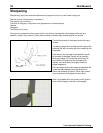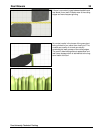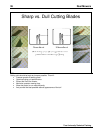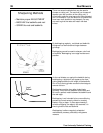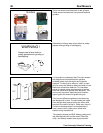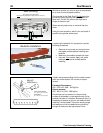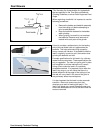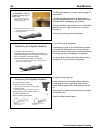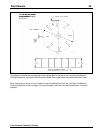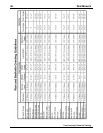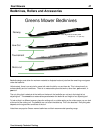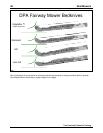
Reel Mowers 41
Toro University Technical Training
Spin Grinding
(Flat Grinding)
There are two methods of grinding reels. This
illustrates Spin Grinding (which is also known as
Flat Grinding).
With this method, both the reel and the grinding
stone are turning as the reel is being sharpened. It
is sometimes stated that backlapping is not required
after spin grinding because the reel is a perfect
cylinder when grinding is completed. This depends
on proper alignment of the reel in the grinder before
sharpening. Also, the bedknife and bedbar must be
straight and perfectly parallel to the reel when it is
mounted. Backlapping will remove burrs and rough
edges, producing a honed edge that will cut grass
evenly.
If using a spin grinder to sharpen straight stock reel
blades (such as on fairway mowers), some or all of
the relief will be ground off. If you are going to
restore the relief that was on the blade when was
manufactured, you will need to also use the other
method of grinding (single blade relief grinding). It is
recommended to do the relief grinding first, then
spin grind to restore the reel to a cylinder shape and
establish the land width.
Single Blade Grinding
(Relief or Back Grinding)
This illustrates Single Blade Grinding (which is also
know as Relief, Grinding, or Back Grinding.
With modern grinding equipment, spin (or flat)
grinding and single blade grinding are available on
the same machine. Single blade grind if necessary,
to restore the relief or back grind, then spin grind to
sharpen and return the reel to a cylinder shape.
Toro recommends a 30 degree relief angle on each
reel blade. The angle itself is not critical. You can
put as little or as much angle on the blade as you
think is proper. A larger angle will take off more
steel and the reel may have to be replaced sooner.
With a smaller angle, you may have to grind the reel
more often to maintain a relief. See the reel and
bedknife grinding guidelines chart, at the end of this
section, for grinding specifications on each cutting
unit model.




